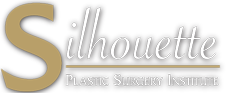Dr. Hootan Daneshmand
Cheek Implants in Orange County and Bakersfield
Home » Our Procedures » Face Surgery Procedures » Cheek Implants in Orange County
Orange County Cheek Implants
As you age, the soft tissues of your cheeks start to relax, separate, and droop. This can result in a deflated or tired appearance, especially for those who’s face has begun to shift prematurely.
However, there are several ways of addressing the issue.
If you’re unhappy with the appearance of your face, there are a plethora of Orange County facial plastic surgery procedures to choose from. For example, cheek implant surgery is an increasingly popular option to maintain a youthful appearance.
Many patients hear about buccal fat removal in Orange County, but not many hear of the efficacy of Orange County chin implants and cheek implants to enhance facial contour.
At Silhouette Plastic Surgery Institute, we offer a wide variety of both surgical options and nonsurgical options for our patients. To schedule a consultation at our Orange County plastic surgery center, please call 949-359-8397 or fill out our online intake form.

What Are Cheek Implants?
Cheek implants, commonly known as cheek augmentation, are used to make the cheeks fuller or to accentuate the cheekbones. Cheek augmentation, like other forms of cosmetic surgery, may make your face look younger or balance your facial characteristics, making you feel more appealing. They are a specific type of facial implant.
Facial implants are custom-made solid materials that are suitable for human tissues and are used to improve or enhance the physical properties of your face. A review of your objectives, the traits you intend to improve, and your surgeon’s opinion are required to determine the exact type and size of facial implants that are most suited for you.
While facial implants can be used in any part of the face, the most popular locations are the cheeks, chin, and jaw. Facial plastic surgery may help you if you have a tiny chin, a weak jaw, or a lack of facial shape.
Choosing Between Cheek Implants and Fillers
Although there is no one-size-fits-all solution for everyone, there are a few reasons why implants may be a better option than fillers. To ensure you’re making an educated decision, consult with a board-certified plastic surgeon with experience in the facial plastic surgery procedures you’re contemplating before undergoing any surgery.
Dermal fillers are fantastic for short-term improvements, but they only last about 6 months on average. Fillers produce modest benefits and are a wonderful choice for people who want to try out more plump cheeks before investing in a long-term solution.

Cheek implants are composed of medical-grade silicone and come in a variety of shapes and sizes to get the effect you want. The operation may be completed in 30-60 minutes and provides immediate results. Men and women who want long-term results with minimum downtime can consider implants.
Fillers can’t deliver the volume and 3D structure that medical-grade face implants can. Dermal fillers may not be adequate to provide the desired result for individuals with significantly depressed cheeks.
How Much Do Cheek Implants Cost?
As per the American Society of Plastic Surgeons‘ 2020 figures, the estimated cost of cheek implants is $3,669. This is only a portion of the entire cost; it excludes anesthesia, surgical facilities, and other associated costs. To establish your final price, please contact the office of your doctor.
Types of Cheek Implants Used for Augmentation

Even though people of all ages are generally good candidates, cheek implants are typically recommended for younger patients who want to work out a solution to remedy the anatomy within their cheeks. Fillers are typically indicated for older patients who are unhappy with the indications of aging in the midface area, most notably volume loss that makes their cheeks appear sunken in. With that in mind, there are three different types of cheek implants to be aware of.
Malar Implants
These implants are put right on the cheekbones to give them a more prominent appearance. Underneath the submalar area lies the malar area. It’s essentially the location of your cheekbone. Malar implants are less frequent than submalar implants, and patients in their 20s and 30s are more likely to want them. Malar implants are used to generate a sharper, more angled form in the bone, resulting in a stronger and more defined shape.
Submalar Implants
These implants provide volume to the cheeks, smoothing out a depressed or gaunt look. The submalar is slightly below the bottom eye line, where the cheekbone starts. As your fat cells move down into your lower cheek and chin regions, you may see volume loss in this area during your early to mid-40s. The cheeks become sunken in, and the bottom of the face develops jowls over time as a result. Submalar implants, which are inserted precisely above where the cheekbones start, are a simple and economical way to solve this issue.
Combination Implants
The cheekbones and cheeks are both augmented using a combination implant. Although it’s unusual, some patients may choose to have both operations done at the same time if their cheekbones aren’t well-shaped and their midface has lost fullness. Patients who have both treatments combined get the best of both worlds in terms of more plump and anatomically solid cheekbones.
Some implants, such as those made from silicone, can be taken out at a later date. Others blend in with existing bone tissue and become a permanent part of the cheek anatomy.
What Is Cheek Implant Surgery Like?
Cheek implant surgery, or augmentation of the cheeks, is a fairly straightforward surgical procedure. Plastic surgeons generally employ one of two methods: fat grafting and implants. Below, we outline how the cheek implant procedure is done.
Your surgeon will administer either general anesthesia or local anesthesia around the mouth and areas. Different options are available for each patient, but your doctor will recommend what is best for you based on your medical history.
Depending on the procedure employed, different incisions are required for cheek augmentation. If fat transfer is performed to improve your cheeks, you will most likely have a small incision around the fat harvesting area as well as little incisions near the cheeks. These incisions are often only a few millimeters long. If solid cheek implants are utilized, the incision will be determined by your surgeon’s preference. Some cosmetic surgeons place cheek implants through an incision within the mouth, while others execute the procedure through an incision along the lower eyelid.
Then, they close the incisions using tapes, skin adhesives, or sutures. Your cheeks will seem bigger and potentially softer as a consequence of your cheek augmentation. Some patients’ cheeks may even seem raised as a result of the procedure. Hard cheek implants produce lasting effects, whereas fat transfer produces results that may only last a few years.
Risks of Cheek Implants
If you have shortness of breath, chest aches, or irregular heartbeats when you get home, get medical help right away. If any of these problems arise, you may need to be admitted to the hospital and get extra treatment.
Other potential complications of cheek implants include:
- Risks of anesthesia
- Bleeding
- Asymmetrical results
- Deep vein thrombosis
- Displacement of implants
- Fatty cysts
- Fat necrosis
- Seroma, or fluid accumulation
- Hematoma
- Lumpiness
- Infections
- Changes in skin sensation or numbness
- Persistent pain
- Revision possibility
- Skin discoloration or prolonged swelling
- Skin loss
- Thick scar tissue around the implant
- Unpleasant scarring

What Is Recovery Like After Cheek Implant Surgery?
You will likely experience a fair amount of bruising and swelling during the recovery period for your augmentation. For a few weeks, those who opt for medical silicon implants should avoid potential injury to the cheeks, as this can affect placement. After that, it is unlikely that your implants will move unless you suffer a severe blow to the cheeks.
After a cheek enhancement, swelling, bruising, and pain are to be expected, but post-operative guidelines and medicines will be given to alleviate any discomfort. You must be ready to undergo transient lumpiness and swelling as a result of cheek augmentation. Despite the fact that it is often aesthetically distracting, most individuals consider it a minor annoyance in exchange for the physical and psychological benefits they receive.
Cold compresses should be used often during the first 72 hours to speed up the recovery process. For the first 2-4 weeks after surgery, patients are encouraged to sleep with their head raised or in a chair. This aids in the reduction of edema. After the cheek augmentation procedure, parts of the cheeks and lips will feel weak or numb. This is normal and generally only lasts a short time. This might take several weeks or months to subside.
Cheek Implant Results
Swelling may mask the ultimate outcomes of cheek augmentation surgery at first. If you have fat transferred into your cheeks, the outcomes will depend on how much fat was deposited and how much fat your body has preserved. Many things influence this, including surgical skill and your body’s particular metabolism. Your ultimate result will be more consistent if solid cheek implants are employed.
Medical and surgical practice is not a precise science. Although positive outcomes are anticipated, there is no assurance. In some cases, a single surgical treatment may not be enough to obtain ideal outcomes, and an additional procedure may be required. Rather than returning to the surgical room, some patients will ‘retouch’ their results using injectables.
How Long Do Cheek Implants Last?
Another significant distinction between face implants and fillers is longevity. The effects of a face implant are permanent. The effects of fillers, however, often endure six months to two years, depending on your metabolism.
Cheek Implant Plastic Surgeon in Orange County, California
When considering cheek implants, fillers, eyelid surgery, or a chin implant, it’s important to work with a board-certified facial plastic surgeon. To achieve greater facial symmetry in both the cheekbones and to feel more comfortable with your appearance, cheek enhancements are a great option. Whether you’re looking for a major change or a simple outpatient procedure, Silhouette Plastic Surgery has you covered. We also offer body procedures such as Orange County liposuction and Orange County body contouring. To discuss whether or not you’re a good candidate for this procedure, feel free to contact our Orange County plastic surgery office. Call today at 949-359-8397 or fill out our online intake form.
